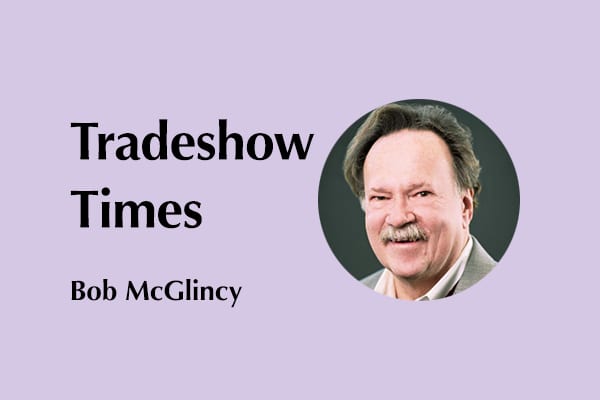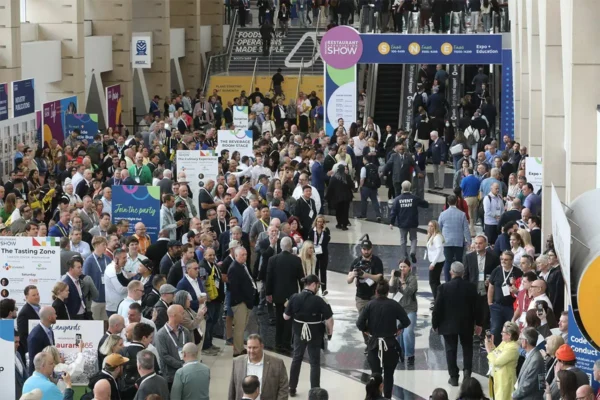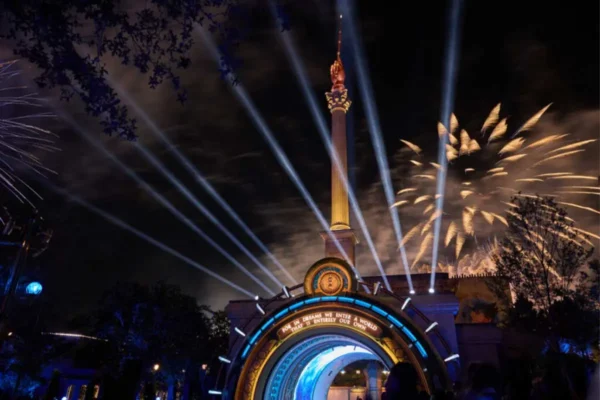by Bob McGlincy
Tradeshows create jobs and impact local economies. They entice targeted buyers and sellers into a stimulating 3-D sales, marketing and educational environment. Technology and product displayed at shows establish brands, enrich sales and energize corporations. Below are four examples of how unknown companies benefited enormously from exhibiting at tradeshows.
1. Steve Jobs and Steve Wozniak drew up a parntership agreement on April 1, 1976. At the time, they were working out of a garage in Los Altos, Calif. On Jan. 1, 1977, their company was valued at $5,309. On December 12, 1980, they took the company public. Just 19 days later, on December 31, the company was worth $1.79 billion. How did this happen?
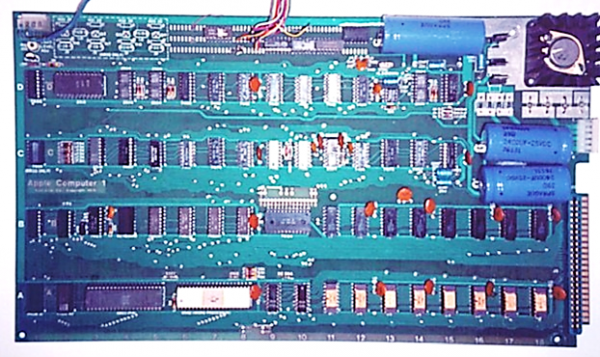 Apple showcased their first “computer” (pictured right) on Aug. 28, 1976, at the Personal Computer Festival in Atlantic City. They displayed a microprocessor system; it lacked an enclosure, keyboard and power source. Apple did not close a sale or write a single order at the show. Jobs walked the show floor and realized they would have to build a complete, ready-to-run machine.
Apple showcased their first “computer” (pictured right) on Aug. 28, 1976, at the Personal Computer Festival in Atlantic City. They displayed a microprocessor system; it lacked an enclosure, keyboard and power source. Apple did not close a sale or write a single order at the show. Jobs walked the show floor and realized they would have to build a complete, ready-to-run machine.
The Apple II, with color graphics, debuted at the First West Coast Computer Faire in San Francisco on April 17, 1977. Understanding the importance of marketing, and wanting “a big launch,” Jobs secured a prime space at the front of the exhibit hall. The pipe-and-drape show had 175 booths, and attracted 12,652 people over the two-day event. Apple was the only company with a hard-wall exhibit. Despite having just three working computers, Apple wrote 300 sales orders, and would sell 2,500 units in the next eight months. In 1977, Apple’s revenue was $773,977. The company continued to exhibt at tradeshows; their revenue increased ten-fold in 1978, improved to $47.9 million in 1979, and was a staggering $117.9 million in 1980.
Apple helped launch the personal computer market, but they were not alone. Altair exhibited at the PC Festival in 1976. Commodore unveiled their PET at CES in 1977; Tandy displayed its TRS-80 that same year. IBM entered the PC market at Fall Comdex in 1981. The Commodore 64 debuted at CES in 1982. One thing these companies had in common: After displaying their product at tradeshows, the company’s sales increased.
2. Isaac M. Singer manufactured the first straight stitch sewing machine in Boston in 1850, and the invention revolutionized the clothing industry. The company first exhibited in London in 1851 and sold 810 machines two years later. At the Paris Exposition in 1855, Singer’s invention won a gold medal. By 1860, through patents and mass production, Singer became the largest manufacturer of sewing machines in the world. They continued exhibiting at tradeshows and founded the world’s first multi-national company. In 1875, the Singer Manufacturing Company had more than 50,000 employees worldwide and was selling more than 2 million units a year—quite an increase from the 810 units sold in 1853.
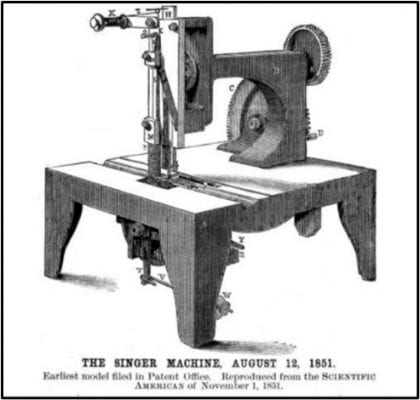 At the 1876 Centennial Exposition in Philadelphia, Singer exhibited a variety of new models in the main hall. They also constructed a separate Singer structure on the exposition grounds and provided their employees with an all-expenses-paid round-trip to the Philadelphia Fair. On June 22, 1876, the company rented six trains to transport more than 4,000 employees from the New York office and the Elizabeth manufacturing plant to Philadelphia. It was reported that Singer spent $15,632 (equivalent to $384,246 today) on the excursion, not including salaries, wages and time lost. Continuing to innovate and display at tradeshows, Singer demonstrated the first electric sewing machine at the International Electrical Exhibition in 1889. In 1895, Singer manufactured and sold more than 13 million sewing machines. In the early 1990s Singer had annual revenues in excess of $1.2 billion.
At the 1876 Centennial Exposition in Philadelphia, Singer exhibited a variety of new models in the main hall. They also constructed a separate Singer structure on the exposition grounds and provided their employees with an all-expenses-paid round-trip to the Philadelphia Fair. On June 22, 1876, the company rented six trains to transport more than 4,000 employees from the New York office and the Elizabeth manufacturing plant to Philadelphia. It was reported that Singer spent $15,632 (equivalent to $384,246 today) on the excursion, not including salaries, wages and time lost. Continuing to innovate and display at tradeshows, Singer demonstrated the first electric sewing machine at the International Electrical Exhibition in 1889. In 1895, Singer manufactured and sold more than 13 million sewing machines. In the early 1990s Singer had annual revenues in excess of $1.2 billion.
3. Elisha Otis invented the safety brake for elevators in 1852. At the time, there were no passenger elevators, only freight ones, and workers were too scared to ride with the freight. At the New York Exposition in 1854, P. T. Barnum paid Otis $100 to draw crowds and demonstrate his safety brake. Otis stood on a platform with freight and had it hoisted above the show floor. He yelled, attracted more people, and asked if he should cut the rope. After protests, and even some cheers from the crowd below, that is precisely what he did: He severed the hoisting cable. The platform dropped only a few inches before the safety brake kicked in and the elevator stopped. Three years later, the first passenger elevator was installed at Haughwout’s department store, on the corner of Broadway and Broome in New York City.
 Passenger elevators today are so safe that people take them for granted. In New York City alone, there are 30+ million elevator trips daily. But without safe passenger elevators, or some similar invention, the world as we know it would be very different. Think about it: There probably would be no buildings more than six or seven stories high; there certainly would be no skyscrapers without some type of safe, vertical transportation.
Passenger elevators today are so safe that people take them for granted. In New York City alone, there are 30+ million elevator trips daily. But without safe passenger elevators, or some similar invention, the world as we know it would be very different. Think about it: There probably would be no buildings more than six or seven stories high; there certainly would be no skyscrapers without some type of safe, vertical transportation.
After Otis’ death in 1861, his two sons took over the business, and understanding the importance of tradeshows, they exhibited in numerous capitals throughout Europe. At the Exposition Universelle of 1889, Otis manufactured and installed elevators at the Eiffel Tower (in spite of the Fair’s initial stipulation that only French companies could be used in any construction). Then, at the turn of the century, again in Paris, the Otis Elevator Company demonstrated the world’s first escalator.
Today there are more than 2.6 million Otis elevators and escalators worldwide; and pre-pandemic, they moved 2 billion people daily. When Elisha Graves Otis first exhibited, that tradeshow lost money; however, the company he founded did not. In 2019, Otis employed 69,000 people and generated revenues exceeding $13.1 billion.
4. When the Philadelphia Centennial Exposition opened May 10, 1876, Alexander Graham Bell was in Massachusetts, employed as a professor at Boston University. Two months earlier, on March 7, Bell received a patent for the telephone. In mid-May, after the Philadelphia show had already opened, Bell demonstrated his invention at the American Academy of the Arts in Boston. It was a success, and his future father-in-law convinced him to exhibit in Philadelphia. Bell had his day job and responsibilities, and could not travel to the show at that time. He sent a modified version of his phone to display; it did not create a sensation and was initially passed over by the judges and the rest of the visitors at the show.
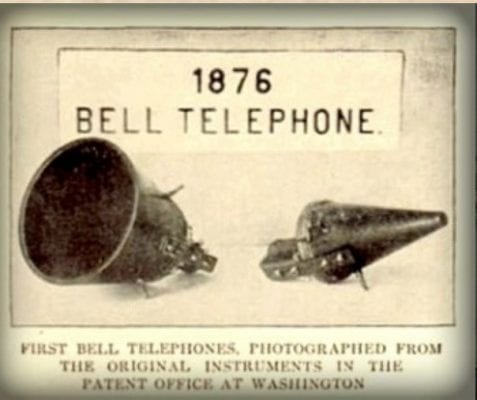 After classes concluded at the university, Bell traveled to Philadelphia. He was in his booth on June 25 when judges were reviewing the technology exhibits. They were running behind schedule and were only considering previously reviewed products. They were walking past Bell’s booth when Emperor Don Pedro of Brazil paused. He recognized Prof. Bell from a previous meeting in Boston and stopped to ask him why he was there. Pedro was handed a receiver; he listened and said, “My God, it talks!” Bell won the gold medal for technology, and his instrument became the talk of the show.
After classes concluded at the university, Bell traveled to Philadelphia. He was in his booth on June 25 when judges were reviewing the technology exhibits. They were running behind schedule and were only considering previously reviewed products. They were walking past Bell’s booth when Emperor Don Pedro of Brazil paused. He recognized Prof. Bell from a previous meeting in Boston and stopped to ask him why he was there. Pedro was handed a receiver; he listened and said, “My God, it talks!” Bell won the gold medal for technology, and his instrument became the talk of the show.
The Bell Telephone Company was founded in 1877, and the next year the phone was displayed at the Paris Exposition. Bell Telephone became the world’s largest corporation until it was broken apart by the U. S. Justice Department in 1984. At the time, it employed more than a million people and had assets of $150 billion (approximately $379 billion today).
Tradeshows focus brand awareness onto a targeted audience. They make money for exhibitors and save time and money for attendees. They create jobs and produce tax dollars. And sometimes, tradeshows display extraordinary inventions that change the world. Tradeshows rock!
![]() Bob McGlincy is director, business management at Willwork Global Event Services. Willwork creates engaging, energized, and exceptional event experiences. He can be contacted at Bob.McGlincy@willwork.com
Bob McGlincy is director, business management at Willwork Global Event Services. Willwork creates engaging, energized, and exceptional event experiences. He can be contacted at Bob.McGlincy@willwork.com
This story originally appeared in the May/June 2021 issue of Exhibit City News, p. 34-35. For original layout, visit https://issuu.com/exhibitcitynews/docs/ecn_may-june_2021






